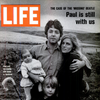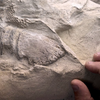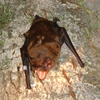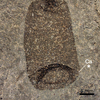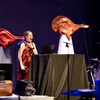The Artist Behind the Macintosh: Susan Kare and Apple Computers

Susan Kare, the artist who humanized computers
Post Author- Ellis Nolan
While the two Steves, Jobs and Wozniak, are the most well known faces behind Apple computers, equally important to the products and culture of the company were those who crafted the experience of using their computers through design. The most notable of these visual architects was Susan Kare, a designer responsible for “humanizing” Macintosh computers.
Kare at her desk at Apple
Kare was born in 1954. A highly creative child, she learned embroidery from her mother, and would spend her time creating art and crafts. She ultimately pursued an education in fine arts, receiving a Master’s and Doctorate from New York University in the subject. Soon after, she relocated to the West Coast to work as a sculptor for the Fine Arts Museums of San Francisco.
In 1982, while working on a commissioned sculpture in Arkansas, she was approached by high school friend Andy Hertzfeld to sketch some icons for Apple’s upcoming Macintosh computer. Kare agreed, and in exchange for her work was given an Apple II computer. Since she had no formal training in the developing field of computer graphics, she used graph paper to simulate pixels on a screen. For this initial test, she created icons for the Macintosh’s cut and paste functions, as well as a paintbrush for the MacPaint application. Hertzfeld and the rest of the Macintosh team were impressed, and Kare was soon hired at Apple.
Icons designed by Kare for the Macintosh
To say Kare was prolific at Apple would be an understatement. While she would often note her lack of technical training, on a team of all software engineers she quickly took advantage of the graphical tools created by Bill Atkinson for the Macintosh, and her influence on the project was deeply felt. Even within the confines of 32 x 32 pixel icons, she was able to convey such personality and friendliness that helped make the Macintosh more approachable to users. Probably the best example of this is the “happy mac,” the smiling computer icon that greets users upon starting up their computer. She also became somewhat of a spokesperson for the Macintosh, appearing in magazines and on television shows demonstrating the computer’s capabilities.
In addition to the ubiquitous iconography of the Macintosh, Kare also created many of the fonts used in the Macintosh interface, including Chicago, Monaco and Geneva. She would also go on to edit and create many icons that now are industry standard, such as the paint bucket, lasso, grabbing hand, trash can, and I-beam cursor. Another one of her creations, a symbol-only font named “Cairo,” spawned a particularly memorable icon: “Clarus,” a dog/cow hybrid. This icon started off as the “z” key for Cairo, but then was repurposed as an example image for the print dialog box in the MacOS LaserWriter printer software. Since warping, resizing and flipping needed to more noticeably change the image, Clarus was edited by Annette Wagner, resulting in a dog/cow hybrid. To this day, if you search “clarus” in the emoji search bar on an iOS device, the dog and cow emojis will come up as suggestions.
Clarus!
Kare would go on to become creative director at Steve Jobs’ next venture after leaving Apple, NeXT, where she hired designer Paul Rand to create the brand’s logo, immortalized on this turtleneck of Jobs’s. After NeXT, she worked as an independent designer, and now works as a design architect at Niantic Labs.
Despite having little computer graphics or pixel art experience, in about two years working at Apple, Susan Kare was able to synthesize fine art, design, typography and software to revolutionize the visual language of computers. Her ability to reach across these fields, as well as to communicate information to all ability levels in computing was crucial in Apple’s ability to market the Macintosh as a product anyone could use. But perhaps her ability to communicate these concepts so well isn’t in spite of not having a computer background: In her own words, “design problems are solved by thinking about context and metaphor—not by tools.” Kare is an artist, her canvas happens to be 32 x 32 pixels.
Interested in learning more about Apple and early computing? Check out our Technology Collection here!
Featured Product
Joe Frazier Boxing Glove
Cool Things!

Is “Paul is Dead” Dead?: Unpacking One Of Pop Culture’s Most Enduring Conspiracy Theories

Scientists Discover Hooves and Skin in Preserved Dinosaur "Mummies!"
A dinosaur discovery just in time for Halloween! In a new analysis of a group of fossils from Wyoming, Scientists have determined this group of fossils are dinosaur “mummies,” with preserved skin and even hooves.

Scientists Record a Bat Catching Birds Mid-Flight!
Bats, birds, screeches, oh my! In a reverse-Hitchcock twist, a new study reveals that a species of European bat catches and eats birds mid-flight.
Specimen Deep Dives

The House that Ruth Built: The Story of the Old Yankee Stadium

The Queen of the Skies: the Story of the Boeing 747

Old Ironsides: The USS Constitution and the Start of the U.S. Navy
Long Form Articles

The Artist Behind the Macintosh: Susan Kare and Apple Computers
While the two Steves, Jobs and Wozniak, are the most well known faces behind Apple computers, equally important to the products and culture of the company were those who crafted the experience of using their computers through design. The most notable of these visual architects was Susan Kare, a designer responsible for “humanizing” Macintosh computers.

Can I Lick It? Yes You Can!
Have you ever been unable to tell if a fossil was really a fossil, but you were too embarrassed to admit it? Have you ever wanted to lick a fossil just because, but you didn’t want to risk judgment from your peers? Well, good news! You can kill two birds with one stone! Licking a fossil can actually help you determine if it’s the real deal or just another rock.

Is It Legal To Own a Meteorite: How to Start Your Outer Space Collection!
Meteorites are some of the rarest geological specimens to be found on Earth. Of course, since these stones are not of our world, purchasing them can sometimes be a confusing process. Is it legal to own a meteorite? In short, yes! Read on for help starting your cosmic collection!



